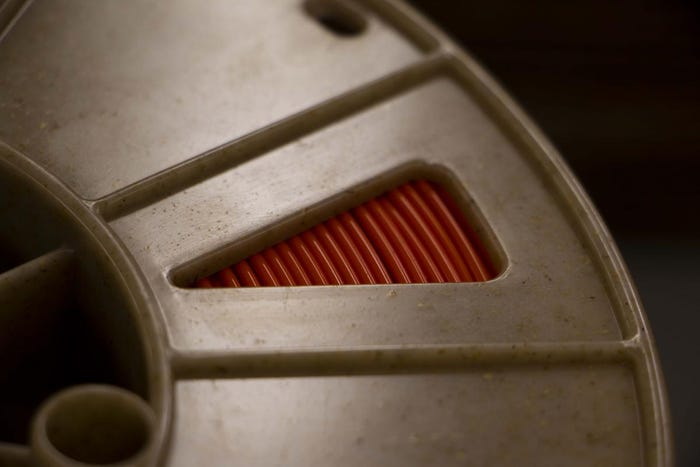Starch-based Biome3D filament now available on US 3D printing market
Fargo, ND-based 3Dom USA, a producer of highly specialized sustainable 3D printing filaments, is now offering a new bioplastic filament for the 3D printing market that it says is “designed to bring together the easy processing of plant-based materials with a finish quality to match oil-based products.” The new filament is produced from Biome3D, a biodegradable thermoplastic produced by Biome Bioplastics in the UK, that, unlike the more commonly used corn-based PLA, is derived from potato starch.
July 13, 2015
Fargo, ND-based 3Dom USA, a producer of highly specialized sustainable 3D printing filaments, is now offering a new bioplastic filament for the 3D printing market that it says is “designed to bring together the easy processing of plant-based materials with a finish quality to match oil-based products.” The new filament is produced from Biome3D, a biodegradable thermoplastic produced by Biome Bioplastics in the UK, that, unlike the more commonly used corn-based PLA, is derived from potato starch.  As a company, Biome Bioplastics is focused on the development of biobased plastics for a wide range of applications, from catering to electronics. The company is committed to challenging the dominance of oil-based plastics and changing perceptions of the capabilities of biopolymers, said Sales Director, Sally Morley. “Biome3D exemplifies that philosophy,” she added.
As a company, Biome Bioplastics is focused on the development of biobased plastics for a wide range of applications, from catering to electronics. The company is committed to challenging the dominance of oil-based plastics and changing perceptions of the capabilities of biopolymers, said Sales Director, Sally Morley. “Biome3D exemplifies that philosophy,” she added.
As John Schneider, President of 3Dom USA, explained: “At 3Dom USA we strive to offer innovative and environmentally-sound products that perform with the integrity of petroleum-based products. The Biome3D filament delivers just that. It’s very easy to work with, it’s a great alternative to PLA and it rivals ABS for when brittleness is an issue.”
Plant-based plastics are already a popular choice for 3D printing because they are much easier to work with during processing, and are food safe and virtually odor free. However, oil-based printing filaments are often still used because they have a higher softening point and make more flexible models that will bend before they break.
According to 3Dom USA, Biome3D combines the benefits of both, demonstrating that high performance plant-based plastics can be the ideal material for the 3D printing industry. The filament offers a good finish and flexibility, ease of processing and excellent printed detail. It can also run at much higher speeds on larger prints, reducing overall job times. And, with an extra nod to eco-friendliness, every spool is wound on 3Dom USA’s Eco-Spool made of 100 percent compostable PLA, a product inspired by the need for a sustainable solution for the mounting number of empty spools that are a direct result of the increasing popularity of 3D printing among businesses, schools and individuals.
3D printing has been heralded as an important step towards more sustainable manufacturing. Potential environmental benefits include reduced transport emissions from lighter materials that can be developed closer to point of purchase, more efficient use of raw materials, and reduced number of parts needed for assembly. 3D printing also gives the ability to produce products on demand and to customize and optimize parts to improve efficiency.
About the Author(s)
You May Also Like


